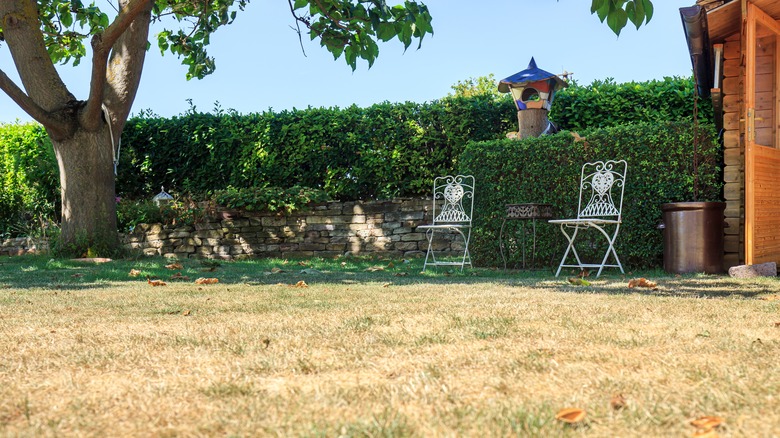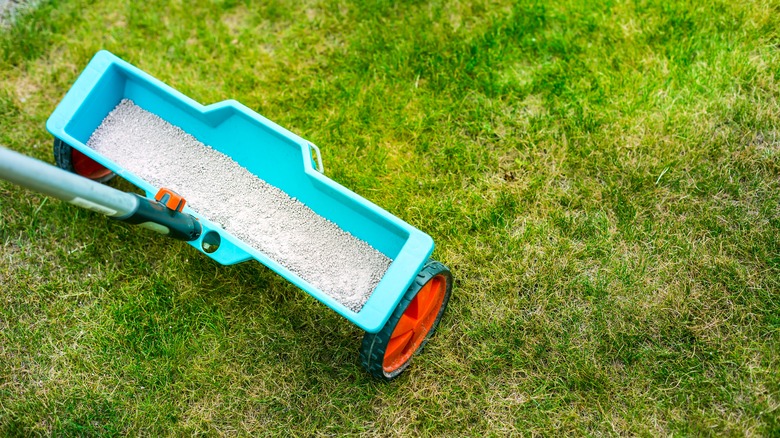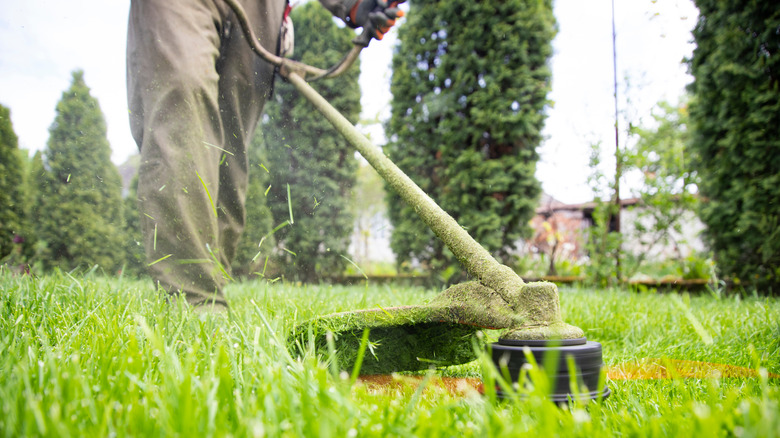Is Your Lawn Doomed If You Skipped Fertilizing It In The Fall? What We Know
Do you want a lush, green lawn this spring? One way to get a beautiful lawn in the spring is by fertilizing it in the fall. Late-season or fall fertilization is recommended by lawn experts for many reasons. Fertilizing your lawn during the fall gives it essential nutrients needed for the spring growing season. Grass fertilized during the fall has been found to have significantly higher levels of stored carbohydrates. This makes the grass more stress-tolerant, meaning that it is better able to recover faster from traffic or pest-induced stress. Plus, grass greens up weeks earlier when it has been fertilized during the fall.
It's clear that there are many benefits of fall or early winter fertilization. What if you forgot to fertilize your turf during the fall or didn't know you were supposed to do so? Is it too late to fertilize your lawn? Lawns should not be fertilized when air temperatures are below 40 degrees F. This is because your grass won't be able to effectively absorb the nutrients applied through fertilization. The good news is that your lawn won't be ruined if you don't fertilize it in the fall. You can still get a beautiful lawn by correctly fertilizing this spring.
What to do if you forgot to fertilize your lawn
You will want to apply fertilizer early in the spring, between February and April. Just make sure the air temperature is higher than 40 degrees F. You'll want to apply it around the time that your lawn needs to be mowed. Look for a 32-0-4 fertilizer like Scott's Turf Builder Pro. It should have 32-0-4 located somewhere on the label. These fertilizers contain 32% Nitrogen, 0% Phosphorus, and 4% Potassium. Some fertilizers, like Scotts, also help protect against weeds as well.
To apply the fertilizer, you'll first want to water your lawn. You should do this a few days before applying the fertilizer. After watering, apply the fertilizer to your entire lawn using a broadcast spreader. You can use a handheld spreader if you have a small lawn. Apply fertilizer no more than once every six weeks. More frequent applications can damage your lawn. Besides early spring, late spring, summer, and fall are the best times to fertilize. Set up a reminder on your phone calendar to fertilize at these times.
Other tips to make your lawn green again
Besides fertilizing, there are some other important things that you'll want to do to bring your lawn back to life this spring. Doing these things, along with fertilizing, will help ensure that your lawn thrives. The first thing to do is prevent weeds. Besides making your lawn look bad, weeds compete for water and nutrients and can kill your turfgrass. If you use a fertilizer with weed control, you won't need to use anything else on your lawn for those pesky dandelions. But, if you use fertilizer only, then also use either a natural or commercial product to get rid of your lawn's weeds.
Next, make sure you select the highest grass setting on your mower when you mow the lawn. Cut just ⅓ of the grass blades with each mowing. When your grass blades are longer, it helps the roots grow deeper. This makes it easier for the roots to find nutrients and water in the soil, leading to a greener, healthier lawn. Also, when roots are deeper, it makes it harder for weeds to grow. Most grass does well with taller mower settings, but there are a few, such as Bermuda grass, that thrive when they are kept shorter.


